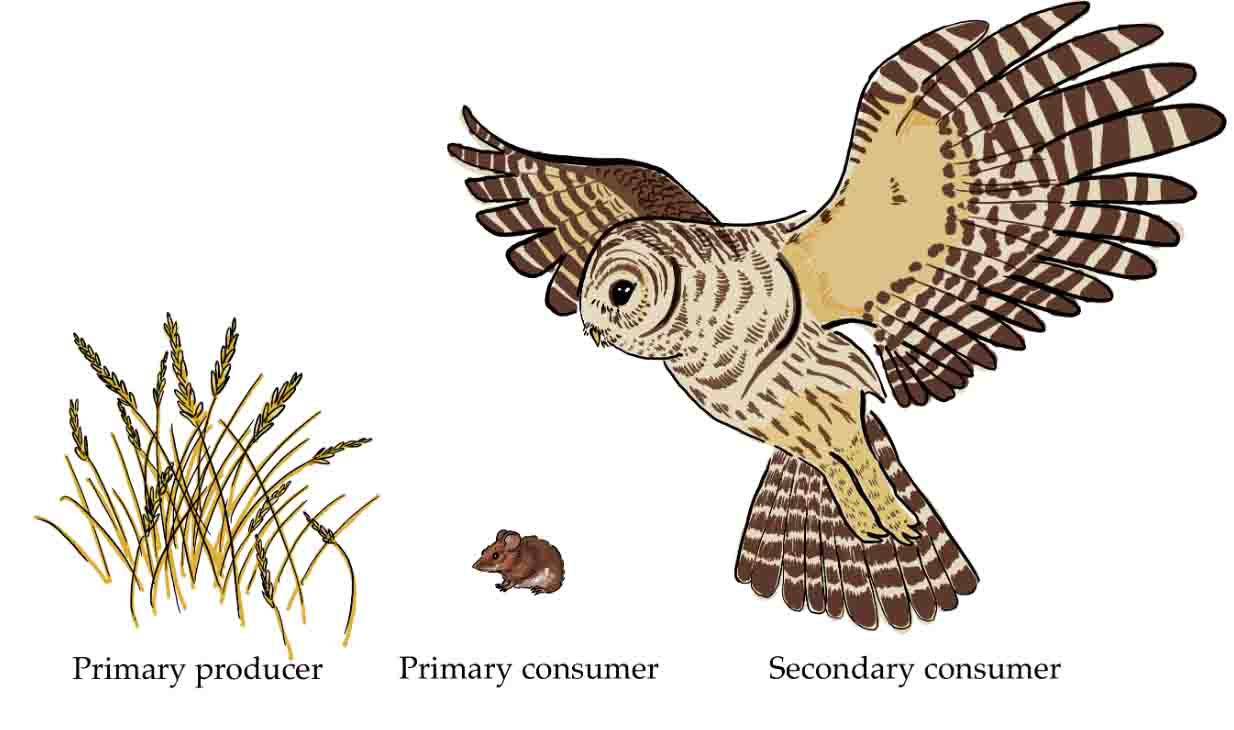Secondary Consumer Definition
Organisms that consume primary consumers for energy are secondary consumers. Primary consumers are always herbivores, or organisms that eat only autotrophic plants. Carnivores or omnivores can be secondary consumers. Omnivores eat both plant and animal matter, while carnivores eat only other animals. It is still necessary for a secondary consumer to have primary consumers in its diet in order to survive.
Examples of Secondary Consumers
Almost every habitat on earth has secondary consumers of all shapes and sizes. Secondary consumers live in extreme environments like icy tundras, arid savannahs, and artic waters. Primary consumers, whether on land or in water, have one thing in common: they eat food.
Due to the abundance of food sources available in aquatic environments, several types of secondary consumers can be supported. A piranha is an aquatic omnivore that eats fish, snails, aquatic plants, and even birds. In addition to larger sharks, whales, and fish, smaller, less predatory sharks can also be considered secondary consumers.
There would be no population regulation for primary consumers if there were no aquatic secondary consumers. Primary producers, such as phytoplankton, which make up the first trophic level, would be overconsumed. Without phytoplankton (and other autotrophs like them), life would not exist on earth.
There are a great variety of terrestrial habitats, from freezing habitats with temperatures below zero to nearly waterless deserts along the equator. It is fortunate that secondary consumers have adapted to exist in all types of ecosystems. Moles, birds, and other secondary consumers such as dogs and cats live in temperate regions.
Humans were once considered secondary consumers because other mammals could easily hunt them. As a result of evolution and new technology, humans are now considered tertiary consumers.
The unique thing about secondary consumers is that, depending on the environment, they can also be considered primary or tertiary consumers. The squirrel is a primary consumer of nuts and fruits, for example. A squirrel is considered a secondary consumer if it starts eating insects or baby birds.
Function of Secondary Consumers
Food chains are incomplete without secondary consumers. In order to control the population of primary consumers, they eat them for energy. The secondary consumers also provide energy to the tertiary consumers who hunt them. Energy movement through consumers is tracked by grouping them into tropic levels.
Plants and other autotrophs, which produce their own energy, are at the bottom of the pyramid because they are self-sufficient. This is the first level of the trophic chain. The second tropic level consists of primary consumers (herbivores); the third tropic level consists of secondary consumers, and so on.
Because metabolic heat is released when an organism consumes another organism, energy is lost as it moves up the trophic level. At the bottom of the pyramid, 100% of the energy is generated by itself. A secondary organism receives only 1% of the original energy when it eats.
There must be many more producers and plant-eaters than anything else in order to provide enough energy to the top tiers of the pyramid. Although secondary consumers are fewer, their importance does not diminish. The food chain is delicately balanced.
There would be no food supply for tertiary consumers if there are not enough secondary consumers. Secondary consumers will eat more and more primary consumers until they are on the brink of extinction if there are too many. The natural order of life on earth would be disrupted by both of these extremes.
Types of Secondary Consumers
There are two types of secondary consumers: carnivores and omnivores.
Meat is the only food that carnivores consume. Although some secondary consumers are large predators, they often eat herbivores bigger than themselves to get enough energy. Secondary carnivores include spiders, snakes, and seals.
Other types of secondary consumers include omnivores. Plants and animals are both eaten for energy. Skunks and bears are examples of omnivorous secondary consumers that consume both prey and plants.
It is important to note, however, that some omnivores are simply scavengers. Rather than hunting, they eat the animal remains that other predators leave behind. In addition to opossums and vultures, hyenas also scavenge for food.

